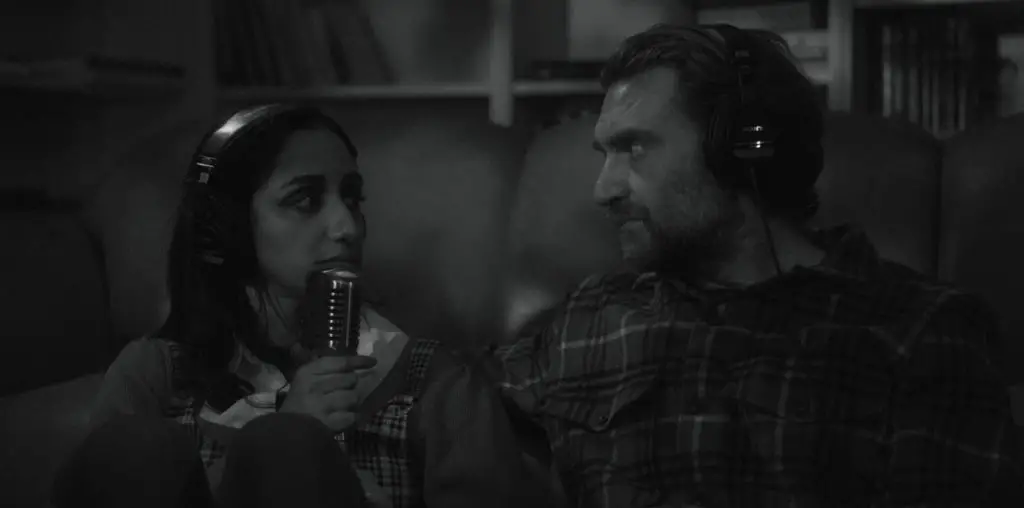
BOOTLEG FILES 137: “The All-Star Bond Rally” (1945 morale booster with Bob Hope, Bing Crosby and Betty Grable).
LAST SEEN: We cannot confirm the last public screening.
AMERICAN HOME VIDEO: Only in public domain dupes.
REASON FOR DISAPPEARANCE: Obscure short with no reissue value.
CHANCES OF SEEING A DVD RELEASE: Not by itself.
During World War II, Hollywood worked overtime creating propaganda films designed to boost morale and unite the country. While many of these films may seem corny and strange in retrospect, during the 1940s they were highly effective in providing entertainment and building patriotism.
But in the case of the 1945 film “The All-Star Bond Rally,” the good intentions were diluted by bad timing. The film was ready for release on May 10, 1945 – two days after V-E Day. V-J Day came three months later. Thus, all of the energy and hoopla that “The All-Star Bond Rally” was meant to generate literally came to naught.
Which is something of a shame, since it is a fairly curious short film that often seems more interested in its own self-importance than in the greater good (i.e., fighting the Axis nations). In fact, for most of the film the supposed focus (the sale of war bonds to fund the nation’s military efforts) is completely ignored in favor of jokes, tunes and cheesecake.
“The All-Star Bond Rally” takes place in a theater where Bob Hope (who else?) is the master of ceremonies. Hope is his usual slick self, peeling off bad one-liners with lethal confidence. The “audience” can’t get enough of him, particularly two people who won’t register with today’s viewers but who were actually stars of Hope’s magnitude in 1945: Jim and Marian Jordan, the stars of the radio comedy series “Fibber McGee and Molly.” Their bickering and their banter with Hope make up most of the laughs here.
When Hope and the Jordans aren’t cluttering up the screen with their wisecracks, the film gets stuffed with music. There’s actually a lot of music going on – four songs in an 18-minute movie. One of the songs, however, is simply recycled material: Betty Grable and an army of chorus girls performing “I’ll Be Marching to a Love Song” from “Pin-Up Girl” (the original film was in Technicolor, but this number was recycled in black-and-white to keep with the rest of the film’s monochrome look).
The other songs include Frank Sinatra and Harry James and His Band performing “Saturday Night is the Loneliest Night of the Week,” Harpo Marx performing his own instrumental composition “Guardian Angels” on a harp (this comes after he chases a starlet across the stage and forsakes her for the instrument), and Bing Crosby chanting the strangely tiresome “Bond Song Rally” (with the chorus “Buy, buy, buy…buy a bond!”).
There is also a series of shots of pin-up girls, representing the women the American troops were fighting for (in this case, they were a bunch of 20th Century Fox contract players including Linda Darnell, June Haver, Vivian Blaine, Jeanne Crain and, incongruously, Carmen Miranda). These classy broads were featured while Bob Hope warbled “Thanks for the Memories.”
The film’s direction is credited to Michael Audley. According to the Internet Movie Database, he only directed one other movie, the 1958 “Mark of the Hawk.” What he did in the 13 years in between is a mystery.
20th Century Fox distributed “The All-Star Bond Rally,” which was actually produced by the U.S. Department of the Treasury. Having non-Fox stars like Hope, Crosby and Sinatra was unusual, but it made sense since the studio didn’t have any major male comedy or singing stars during the war era (Betty Grable was the studio’s biggest star attraction, though why she wasn’t asked to do an original musical number isn’t clear). The other cast members also had no Fox connection. Jim and Marian Jordan were not film stars, although they made a couple of forgettable B-Movies, while Harpo Marx had virtually disappeared from movies after the Marx Brothers broke up in 1941 (this was Harpo’s second and last solo film appearance, the other being the 1943 “Stage Door Canteen,” another all-star wartime morale booster).
As mentioned earlier, the timing of “The All-Star Bond Rally” was completely terrible for its mission. After the Japanese surrender in August 1945, the film had no purpose or value and it was withdrawn from circulation. Most likely, it did not generate one penny for war bond sales.
Not unlike the other government-produced propaganda flicks, “The All-Star Bond Rally” had no copyright protection and was immediately part of the public domain. Over the years, dupes of the film have turned up in anthologies of wartime propaganda and it has been excerpted endlessly in both documentaries on wartime Hollywood and for documentaries on members of its starry cast.
In many ways, the bad timing for “The All-Star Bond Rally” was good timing for its audience. Perhaps it is warped, but it was wonderful that a wartime morale boosting film was made for a world that didn’t have war.

I saw this last night on our public access/educational channel. A quaint little film that captured the ‘we’re all in this together’ attitude of the country at the time.
Harpo Marx’s last solo film appearance was in “The Story of Mankind” (1957).